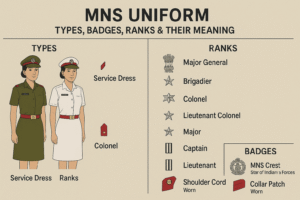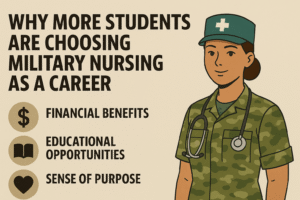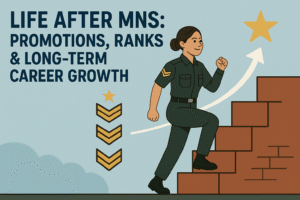INTRODUCTION TO GROUP PLANNING EXERCISE (GPE)
The Group Planning Exercise (GPE) is a vital part of the GTO (Group Testing Officer) series in the SSB interview. It evaluates a candidate’s logical thinking, leadership skills, problem-solving ability, and teamwork. Candidates are required to analyze a situation map and devise a practical solution while working as a group.
STRUCTURE OF A GPE TASK
Here’s what typically happens during a GPE:
A situation map with multiple problems is shown to the group.
The assessor reads the story aloud once.
Candidates are given 5–10 minutes to read and write their individual plans.
A group discussion is conducted to arrive at a common plan.
One person from the group narrates the final plan.
TIPS TO PERFORM WELL IN GPE
1. Understand the Situation Thoroughly
Carefully observe the map and read the situation. Identify key issues, note down the time and distance constraints, and understand the available resources. This will help in building a logical approach.
2. Prioritize the Problems
Handle life-threatening issues first (such as injuries or fire), followed by time-bound tasks (like reaching a location), and lastly, minor problems (like social events).
3. Create a Logical and Realistic Plan
Make sure your solution is practical. Assign roles based on the number of people and resources available. Use logical assumptions and consider speed, time, and distance when planning movements.
4. Practice Map Orientation
Become comfortable with symbols and layouts used in GPE maps. Avoid unrealistic travel between places and always explain how you move from one point to another.
5. Write a Structured Individual Plan
Use a standard format:
Introduction
List and prioritize problems
Step-by-step action plan
Time and distance management
Conclusion
6. Participate Actively in the Group Discussion
Speak logically and clearly. Support valid points made by others and refute unrealistic ones respectfully. Avoid interrupting others. If possible, take the initiative to start the discussion.
7. Work Towards Group Consensus
Try to unite the group’s ideas into one final plan. Promote agreement rather than division. Demonstrating leadership and flexibility earns more points than being rigid.
8. Volunteer to Narrate the Final Plan
If confident, offer to present the final group plan. Ensure you explain the problems, the action taken, the people involved, and the time required. Maintain eye contact and a clear tone.
9. Show Officer-Like Qualities (OLQs)
Demonstrate leadership, responsibility, logical thinking, and the ability to work in a team. Avoid being aggressive, quiet, or confused.
SAMPLE FORMAT FOR INDIVIDUAL GPE PLAN
Introduction:
We, a group of five friends, reached XYZ town and encountered the following problems.
Problem Identification and Prioritization:
The problems in the order of priority are: accident victim, fire in the building, robbery attempt, and flag hoisting ceremony.
Execution Plan:
Two members rush the victim to the hospital using a vehicle. One person calls the fire brigade and helps control the fire. Two others go to stop the robbery with help from locals or police. After resolving the urgent issues, all regroup to attend the ceremony.
Time and Movement:
Distances are covered on foot, bicycles, or available vehicles, calculated using approximate speed and distance logic.
Conclusion:
All tasks are resolved efficiently with proper coordination, logical division of duties, and time management.
COMMON MISTAKES TO AVOID
| Mistake | Why to Avoid It |
|---|---|
| Ignoring time and distance | Makes your plan unrealistic |
| Dominating discussion | Shows poor team spirit |
| Not prioritizing problems | Leads to inefficient solutions |
| Being over-detailed | Misses the bigger picture |
| Staying silent | Misses an opportunity to show OLQs |
PRACTICE TIPS
Solve 10–15 GPE practice scenarios regularly.
Focus on improving time-bound planning and group communication.
Record your mock GPE discussions to analyze your voice clarity, logic, and participation.
Learn basic emergency handling (first aid, fire safety, communication with authorities).
CONCLUSION
Success in GPE is not just about creating the best plan but about how you think, interact, and contribute to your group’s decision. Show leadership, be cooperative, and stay composed under pressure. Practicing regularly and focusing on core officer-like qualities will ensure you perform well.
FREQUENTLY ASKED QUESTIONS (FAQs)
Q1. What is the main objective of GPE in the SSB interview?
The main objective is to test your logical thinking, teamwork, leadership, and ability to handle multiple challenges under pressure.
Q2. Can we use Hindi during the GPE discussion?
English is preferred, but occasional Hindi is acceptable if needed to communicate better.
Q3. Is volunteering for the final narration important?
Yes, it reflects confidence and leadership. If you are clear about the final plan, volunteering is a good choice.
Q4. Do we need to solve all the problems in the GPE?
Yes, but priority should be given to critical ones. Your plan should be balanced and realistic.
Q5. How long is the GPE task usually?
The entire exercise, including map reading, individual writing, discussion, and final narration, takes around 30 to 40 minutes.






